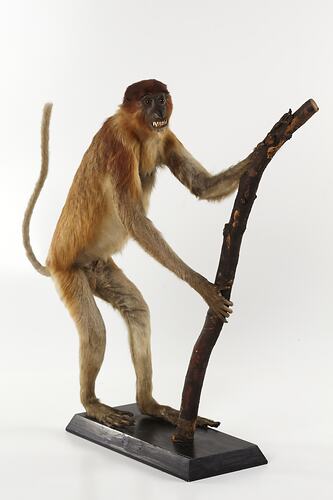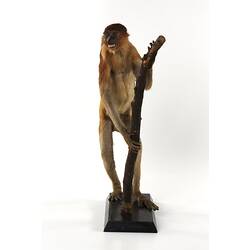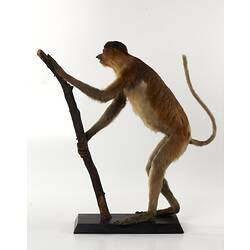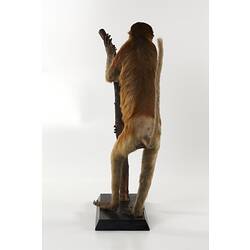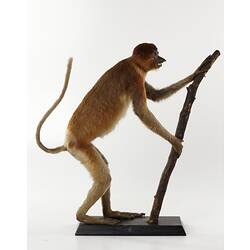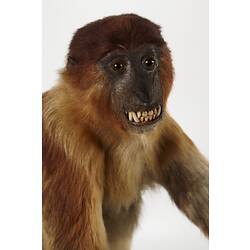Summary
The Proboscis Monkey or Long-nosed Monkey, gets its common name from its distinctive nose. The nose of males is long and bulbous, hanging over the mouth, but in females it is more up-turned and flattened.
This specimen is a juvenile. It was registered into the museum's collections in 1858.
Proboscis Monkeys live on the island of Borneo, which includes Brunei and parts of Indonesia and Malaysia, in forests around rivers at low altitudes and coasts, including mangrove swamps. Their habitat is at risk from forest clearing for human activities such as logging, palm oil plantations and shrimp farms.
Habitat loss has caused populations of Proboscis Monkeys to decrease by over 50% in the last few decades. Because of this and the ongoing risk to habitat the International Union for Conservation of Nature (IUCN) considers Proboscis Monkeys as Endangered. The species is also listed on Appendix I of the Convention on International Trade in Endangered Species (CITES) to ensure that international trade does not threaten it with extinction. Despite being protected by law they are still hunted for food and for bezoar stones found in their digestive tracts for Chinese traditional medicine.
Specimen Details
-
Taxon Name
-
Preferred Common name
Proboscis Monkey
-
Number Of Specimens
1
-
Sex
Unknown
-
Specimen Nature
Nature: Mount, Form: Dry
-
Collected By
Unknown
-
Category
-
Scientific Group
-
Discipline
-
Collecting Areas
-
Type of Item
Taxonomy
-
Kingdom
-
Phylum
-
Subphylum
-
Class
-
Order
-
Suborder
-
Infraorder
-
Superfamily
-
Family
-
Subfamily
-
Genus
-
Species Name
larvatus
Geospatial Information
-
Continent
-
Precise Location
Borneo
